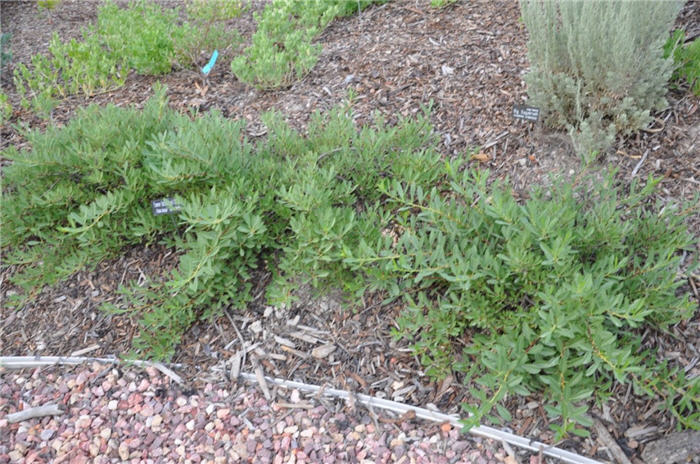| Botanical Name: Prunus besseyi 'Pawnee Buttes' | |
| Common Name: Pawnee Buttes Sand Cherry |

-
Anatomy
-
Culture
-
Design
Plant Type
Shrub, Ground cover
Height Range
1-3'
Flower Color
White
Flower Season
Spring
Leaf Color
Grey Green
Bark Color
Brown, Red
Fruit Color
Black, Red
Fruit Season
Summer, Fall
Sun
Full
Water
Very Low, Low
Growth Rate
Moderate
Soil Type
Sandy, Loam
Soil Condition
Average, Poor, Well-drained, Dry
Soil pH
Neutral, Basic
Adverse Factors
n/a
Design Styles
Mediterranean, Ranch
Accenting Features
Fall Color, Fragrance, Showy Flowers
Seasonal Interest
Winter
Location Uses
Background, Shrub Border, Foundation, Patio, Raised Planter, With Rocks
Special Uses
Small Spaces
Attracts Wildlife
n/a
Information by: Stephanie Duer
Photographer:
Photographer:
-
Description
-
Notes
This selection of sand cherry was discovered in northeastern Colorado, in the Pawnee Buttes. Same fragrant, late spring flowers followed by tasty, edible fruits, and grey-green foliage turns mahogany in the fall. All that charm from a plant that grows only about 12 to 18 inches tall but 3 to 4 feet wide. A productive, attractive groundcover.
Grow in full sun and well drained soil. Adaptive to soil type and pH. It can be trimmed to a smaller size though it flowers and bears best when allowed to grow to its full size. Space plants 3 to 4 feet apart at planting. It is self-fruitful, though fruit production will be best if you have at least two plants. Hardy to -30F. Tolerates hot and dry conditions. Grows rapidly with modest supplemental irrigation and thrives in lean well-drained non-clay soils. If your plants get powdery mildew, they are too wet.